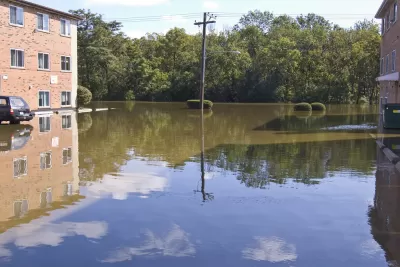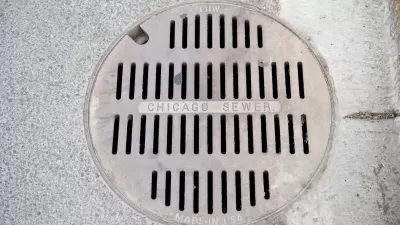Chicago residents living in low-lying parts of the city dread the rainfall that too often brings flooding.

Michael Hawthorne and Morgan Greene report on flooding in Chicago that leaves residents with basements full of water, sewage, and, in some cases, sewer flies. The city’s aging sewer infrastructure cannot handle any sort of rainwater deluge, and the results of the urban flooding have been substantial, write Hawthorne and Greene:
Flood losses in the city and suburbs cost taxpayers $1.8 billion in subsidized grants, loans and insurance payments between 2004 and 2014, according to a report released last month by the National Academy of Sciences. Only hurricane-ravaged areas of coastal Louisiana, New York and Texas received more federal flood aid during the decade.
A number of Chicago neighborhoods are in low-lying areas that make them vulnerable to flooding. "To make matters worse, sewers in Chicago and older suburbs were designed to handle runoff as well as waste from homes and factories. When it rains, the combined sewers quickly fill up, forcing a noxious brew to flow back into basements and out of dozens of overflow pipes into local streams," say Hawthorne and Greene.
Community advocates say the city has been slow to respond, even as it has continued work on the Deep Tunnel, an underground tunnel system designed to handle the runoff that will not be completed until 2029. Some neighborhoods are being proactive and working with organizations like the Center for Neighborhood Technology on strategies to help better manage stormwater drainage.

Alabama: Trump Terminates Settlements for Black Communities Harmed By Raw Sewage
Trump deemed the landmark civil rights agreement “illegal DEI and environmental justice policy.”

Planetizen Federal Action Tracker
A weekly monitor of how Trump’s orders and actions are impacting planners and planning in America.

The 120 Year Old Tiny Home Villages That Sheltered San Francisco’s Earthquake Refugees
More than a century ago, San Francisco mobilized to house thousands of residents displaced by the 1906 earthquake. Could their strategy offer a model for the present?

In Both Crashes and Crime, Public Transportation is Far Safer than Driving
Contrary to popular assumptions, public transportation has far lower crash and crime rates than automobile travel. For safer communities, improve and encourage transit travel.

Report: Zoning Reforms Should Complement Nashville’s Ambitious Transit Plan
Without reform, restrictive zoning codes will limit the impact of the city’s planned transit expansion and could exclude some of the residents who depend on transit the most.

Judge Orders Release of Frozen IRA, IIJA Funding
The decision is a victory for environmental groups who charged that freezing funds for critical infrastructure and disaster response programs caused “real and irreparable harm” to communities.
Urban Design for Planners 1: Software Tools
This six-course series explores essential urban design concepts using open source software and equips planners with the tools they need to participate fully in the urban design process.
Planning for Universal Design
Learn the tools for implementing Universal Design in planning regulations.
Clanton & Associates, Inc.
Jessamine County Fiscal Court
Institute for Housing and Urban Development Studies (IHS)
City of Grandview
Harvard GSD Executive Education
Toledo-Lucas County Plan Commissions
Salt Lake City
NYU Wagner Graduate School of Public Service





























